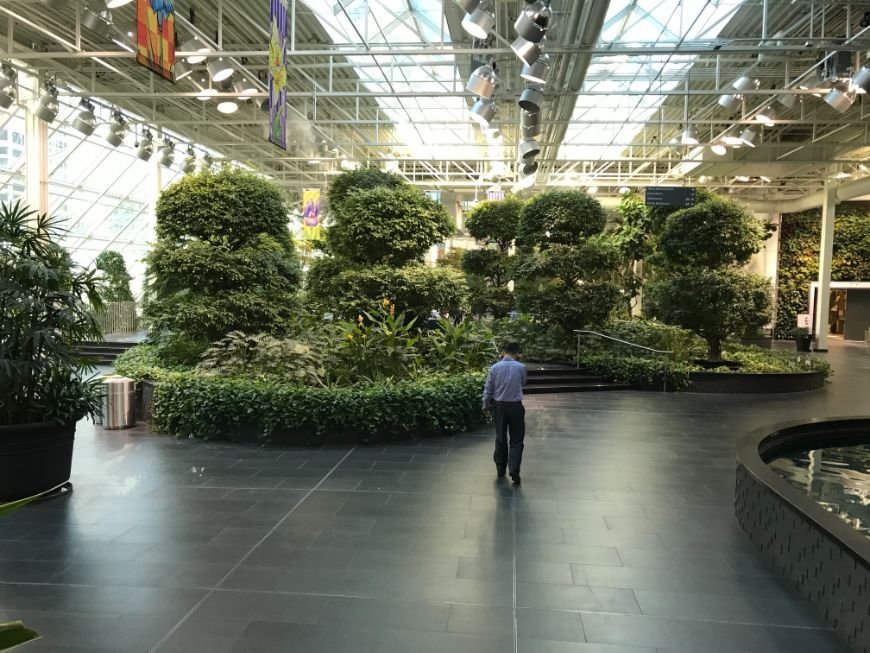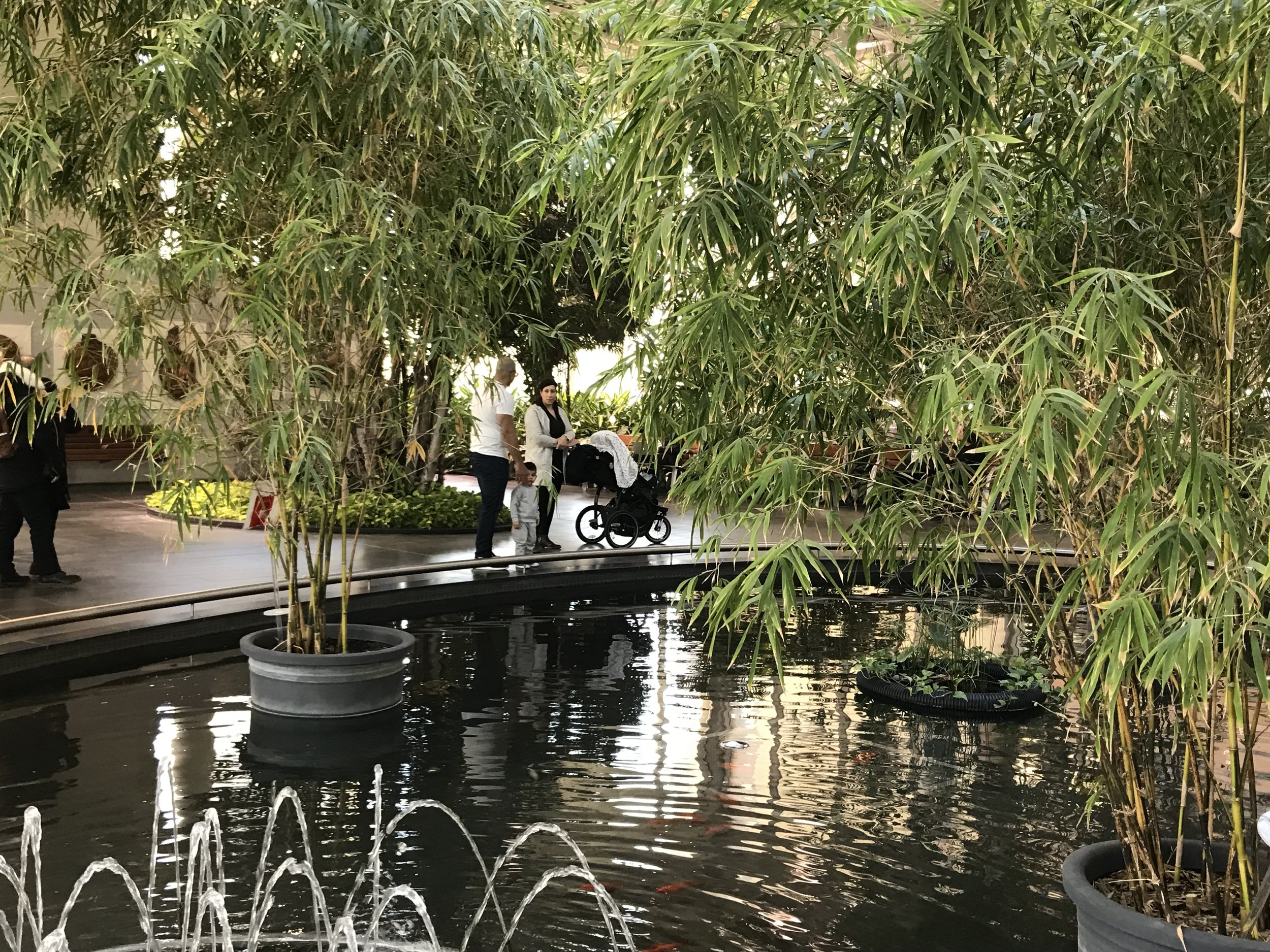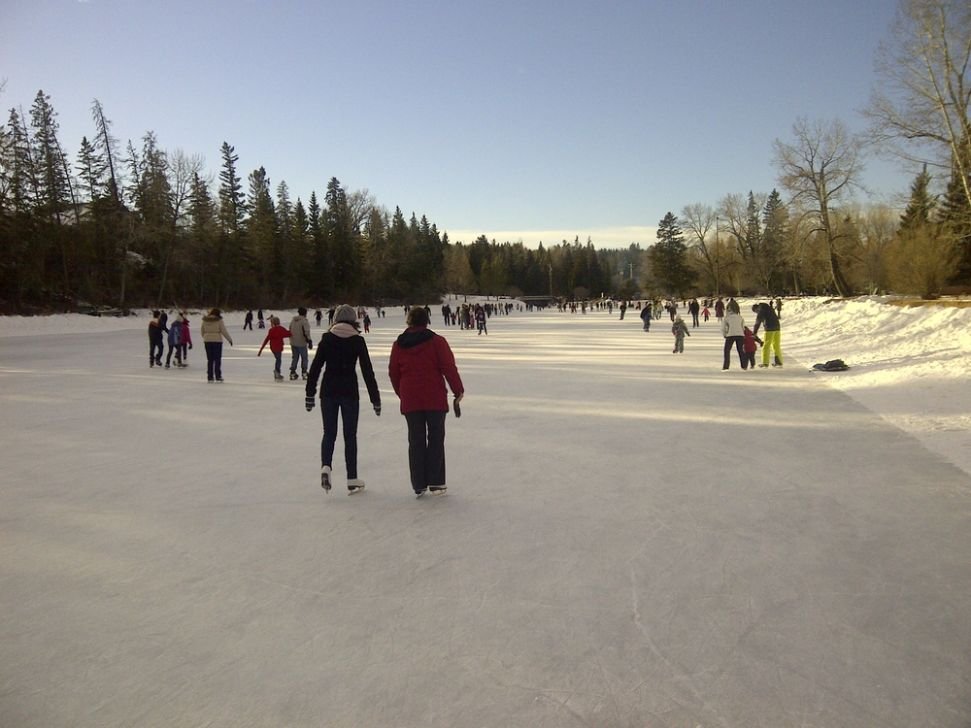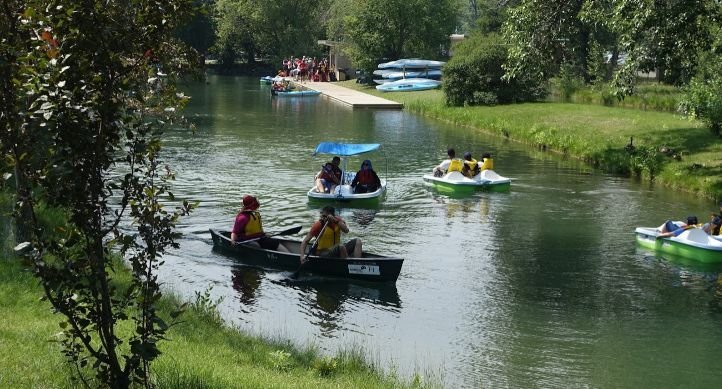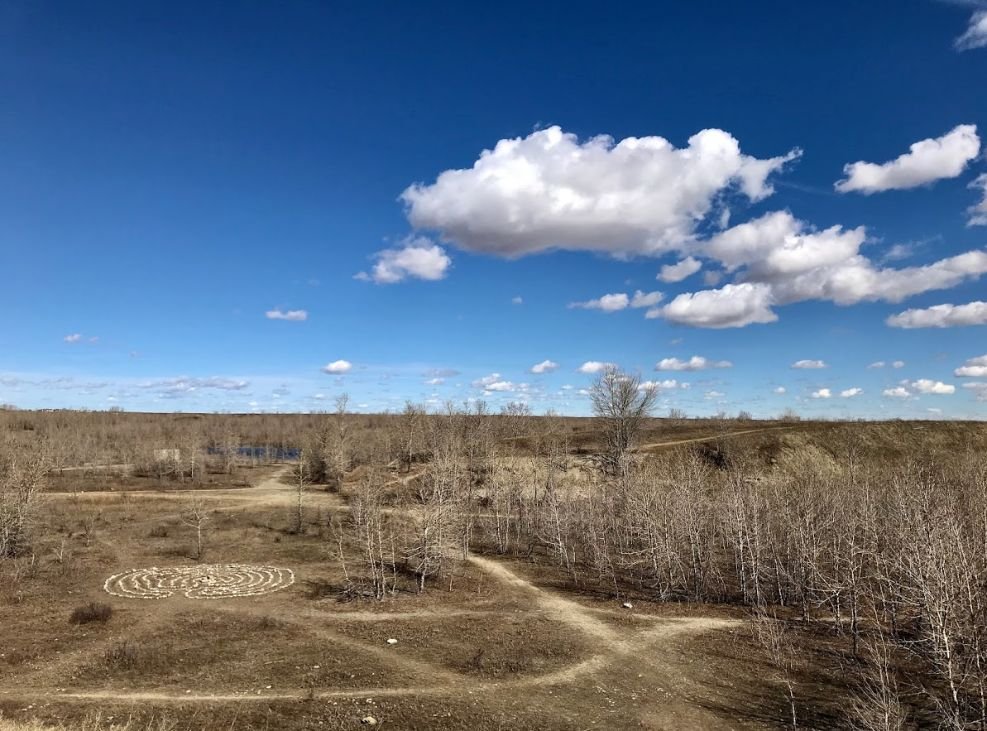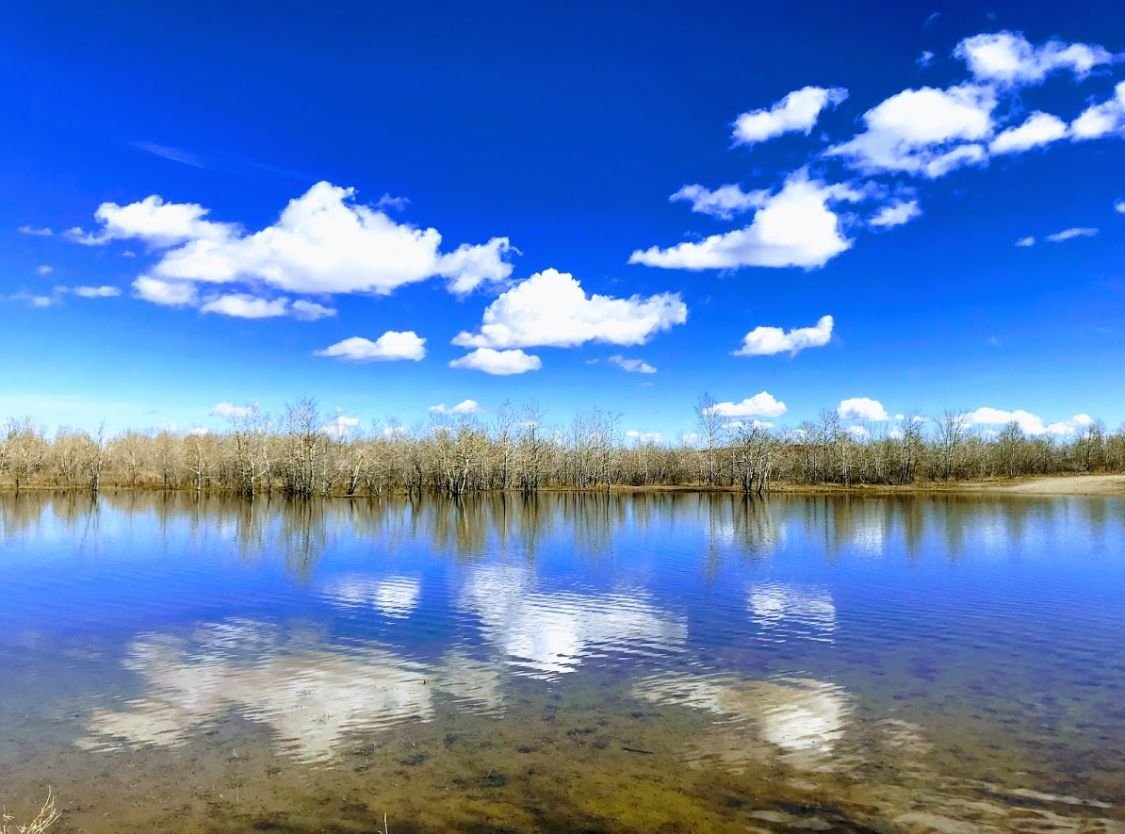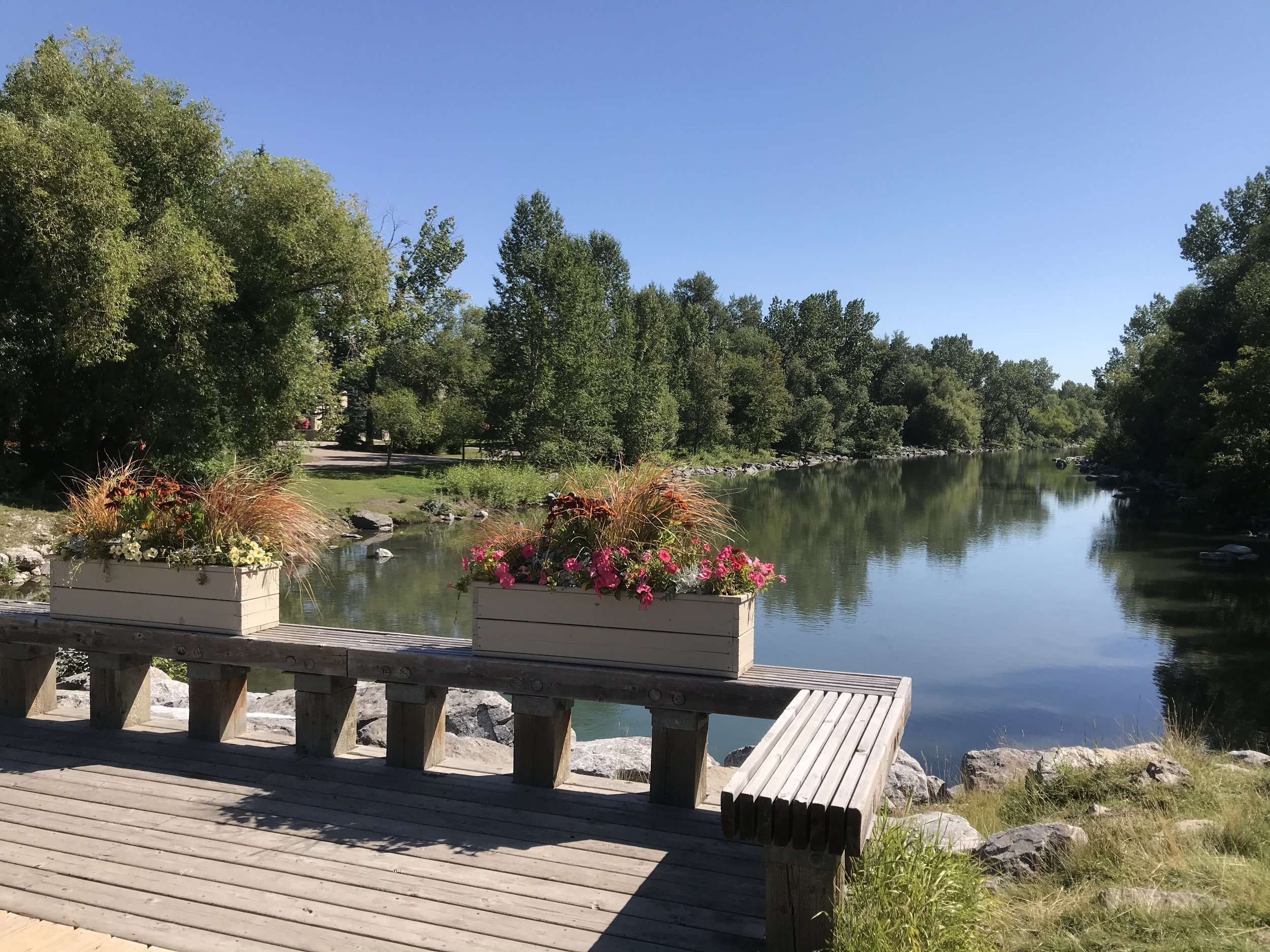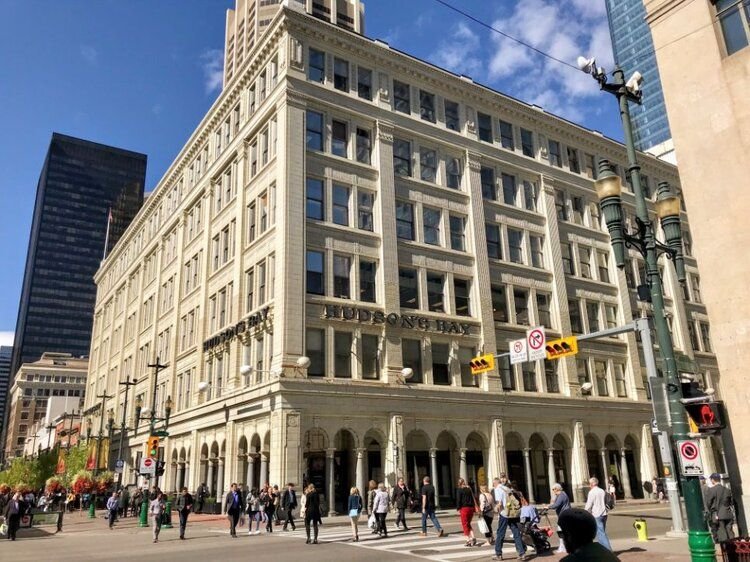Calgary: 24 Beautiful Places To Visit In 2024
Inspired by the blog “21 Most Beautiful Places in New York City (2022) That Are a Must-Visit” by the
Boutique Adventurer, I thought I’d start off 2023 with a blog of my 23 must-visit beautiful places in Calgary.
Obviously “beauty is in the eye of the beholder” so I am sure not everyone will agree with my selections, but here they are - everything from parks to promenades, from public art to parkades, from old to new and in no particular order.
I am always open to feedback, so feel free to share with me what might be missing.
Photo credit: Calgary Municipal Land Corporation
Central Library
Probably on the top of most Calgarians list of beautiful places to visit in Calgary would be the Central Library located at 800 3 St SE behind the old sandstone City Hall and the contemporary glass Municipal Building (aka blue monster). Designed by Snohetta and DIALOG architects, the Central Library is beautiful inside and out.
The façade of the building is made up of five different geometric shapes in dark, light blue, white and clear that collectively create an ever-changing skin as the angle and amount of the sunlight changes. Stare at the façade and you will begin to see shapes that resemble houses, beehives and even books.
At the entrance “The Archway” is a dramatic arch of western red cedar wood that offers a unique view of East Village on one side and the Canadian Pacific Railway and Platform Parkade on the other. It was inspired by Calgary’s famous “Chinook Arch” cloud formation.
The four-storey lobby of the library is dominated by a grand wood staircase with “The Oculus” (skylight) that fills the lobby with sunshine (Calgary gets 320 days of sunshine the most of any major city in Canada.)
If you approach the building from the north side (7th Ave SE) you will experience “The Prow” that juts out over the mouth of the LRT tunnel that runs under the library, creating an unexpected urban experience as the trains enter and exit. The building’s shape is like that of a fly fisherman’s float boat – Calgary’s Bow River is one of the best fly fishing rivers in the world.
The building’s gentle curve is a good example of Calgary’s early 21st century architecture, that rejects the rectangular boxy architecture that dominated downtown in the mid to late 20th century. Today’s architecture is inspired by Calgary’s unique sense of place e.g., the curve of the Bow River as it flows through the city and the Chinook Arch cloud formation in the winter.
National Music Centre
Calgary is home to Canada’s National Music Centre which a collection of over 2,000 rare instruments and artifacts including the Rolling Stones Mobile Studio, the TONTO synthesizer, and one of Elton John’s pianos. I has one of the largest collection of keyboard instruments in the world. In addition, includes the Canadian Music Hall of Fame, Canadian Country Music Hall of Fame, Canadian Songwriters Hall of Fame, ADISQ (Quebec) Hall of Fame.
The centre organizes interactive education programming, artist incubation, exhibitions and performances daily, as well as an artist-in-residence program.
It also includes the broadcast facilities of the CKUA Radio Network and a 300-seat performance hall that hosted a variety of events, including one of Tragically Hip’s last concerts.
The building’s exterior and interior design is exquisite. Designed by Allied Works Architecture the exterior consists of two towers connected by a huge sky bridge over the road.
The façade is clad with metallic glazed terra cotta tiles that change colour depending on the angle and strength of the sun (Calgary enjoys 320 days of sunshine per year). The interior with its dramatic staircase is clad with 226,000 custom glazed terracotta tiles. The building also incorporates the historic King Edward Hotel, which was dismantled and rebuilt, and today is a live music venue.
The building is also known as Studio Bell as Bell Canada purchased the naming rights as part of the fundraising campaign.
Randy Bachman’s guitar collection
Just one of the hundreds of fun artifacts on exhibit.
The Core Skylight / Devonian Gardens
The Core shopping centre has a two and half blocks long (656-foot long and 85-foot wide), suspended glass skylight that is the largest point-supported structural glass skylight in the world. It links three former downtown shopping complexes and today boasts two fashion department stores (Holt Renfrew and Simons) as well as 160 shops and Devonian Gardens. It is centre ice for Calgary’s +15 skywalk, an indoor pedestrian mall that links it to 100+ office, hotels and residential buildings.
The skylight offers celestial-like views of the office towers next to it – Bankers Hall, Dome, Home, TD and Eight Avenue Place, as well as Calgary’s beautiful blue sky.
Devonian gardens is a one-block botanical garden on the second floor of The Core shopping centre with 500 trees, 50 varieties of plants and a 900 sq ft. (size of two-bedroom downtown condo) living wall, playground and dozens of hand carved wooden masks.
FYI: From the late ‘60s until his passing away in 1984, Tom Ward (a City of Calgary employee) carved 100+ masks out of pine and spruce trees from the Jumping Pound area just outside the city. The Ward family has permanently loaned 34 masks to the City of Calgary Parks Department which are on display in Devonian Gardens.
Lougheed House & Garden
The Lougheed House mansion was built in 1891 by Senator Sir James Alexander and his wife Lady Isablella Clarke Hardisty Lougheed. When completed Isabella named the estate “Beaulieu” which means “beautiful place.”
Designed by architect James R. Bowes in the Victorian eclectic style, it combines aspects of several distinct styles varying from Queen Anne Revival to French chateau architecture. When it was built, it would have appeared quite striking on the bald prairie landscape with its rough sandstone exterior, asymmetrical construction, irregular roofline, corner octagonal and rectangular towers, stained glass windows, and dome.
Today the mansion it open for tours and there is a fine dining restaurant that allows you to wander back in time. The lovely gardens are free to explore in the summer. The Lougheed family is probably as close to royalty as it gets in Calgary.
Central Memorial Park / Library
This two-acre park is Calgary’s oldest park dating back to 1912. The park’s aesthetics were laid out to resemble the formal Victorian gardens that were popular at that time. There are many interesting features within this small park, including the statue in front of the library in honour of the soldiers who fought in WWI, the Equestrian statue honouring Albertans who fought in the 2nd Boer War, and the Cenotaph. The park received a face-lift in 2010 that added in fountains and a restaurant.
The Park also includes Calgary’s first public library, which still functions as a library today. The sandstone library cost $100,000 to build of which $80,000 was funded by American philanthropist Andrew Carnegie.
“Robustly constructed and richly detailed, the Memorial Park Library is a fine representative of Edwardian Classicism, a pre-First World War architectural style related to the French Beaux-Arts style. Edwardian Classicism was popular for monumental public and commercial buildings. Often the elegance and grandiosity of Edwardian Classical buildings was echoed in the formal landscapes in which they were set.” From Canada’s Historic Places.
The park is great example of early 20th century landscape architecture which focused on creating parks and gardens as an oasis for city dwellers.
Bowness Park
Bowness Park is a 74-acre park City of Calgary Park on land donated by John Hextall in 1911 as part of a master planned Bowness Estates housing development in return for an extension of the city’s street-car to the new town. The land consisted of two islands in the Bow River, separated by a narrow channel, now damned to create a lagoon and small canal.
In the early days there was a swimming pool, the lagoon for canoeing and boating (with a fountain and central phonograph for playing music), a large dancing pavilion, a merry-go-round (now in Calgary's Heritage Park), picnic tables and shelters, swings and teeter-totters, camping sites and cabins which could be rented by the week or month and later a scenic railway.
Today the lagoon is a popular skating spot in the winter and boating spot in the summer. There is a rideable miniature railway, children’s playground, café and extensive picnic area. It is also a popular spot in the summer for Calgarians to start their float downtown the Bow River.
Bowness Park is a colourful and lively place year-round. The town of Bowness was annexed by the City of Calgary in 1964.
Bow River Promenade /Bridges
The Bow River Promenade extends from Shaw Millennium Park to Fort Calgary Park. It is home to several parks, in addition to the above there are two island parks (St. Patrick’s and Prince’s Island Parks), Sien Lok Park and West Eau Claire Park. There are two historic bridges (Centre St and Louise Bridge) and two stunning modern pedestrian bridges (Peace Bridge and George C. King Bridge). The promenade offers outstanding views of the city’s impressive downtown skyline, as well as the glacier-fed water of the Bow River.
The river changes colours with the seasons and weather, it can be so crystal at times you can see the fish. At other times it is various shades of green, due to the sunlight reflecting off the glacier silt in the water. In the winter the river is white and blue depending on how much ice and snow there is and in the spring it can become a raging brown river do to the rapid melting of snow in the mountains that erodes the muddy banks.
The Bow River Promenade offers many beautiful places to sit and people watch year-round.
Link: Calgary’s SoBow Trail
Peace Bridge
George King pedestrian bridge
Also known as the “skipping rock” bridge
East Eau Claire Park along the Bow River Pathway
West Hillhurst gravel beach
Paddling along the Bow to downtown
Crescent Heights Lookout
As a child growing up in Hamilton, Ontario I always marvelled at the views of the city from the edge of the Niagara Escarpment (aka Hamilton Mountain), with the city below and Burlington Bay (sometimes with huge cargo ships, other times with dozens of sail boats) and Lake Ontario in the distance.
When I moved to Calgary in the early ‘80s one of my favourite things to do was to hike up the stairs to Crescent Heights Road and look down on the Bow River valley, Prince’s Island, downtown, across the city with the Rockies along the horizon line.
For the billion-dollar view of Calgary and a bit of exercise, check out the Crescent Height stairs. Find them just north of the pedestrian bridge over the Bow River and Memorial Drive at the north entrance to Prince’s Island. At the top of the stairs (there are 167 by the way), you will be rewarded with a spectacular view of the Bow River valley, the Rocky Mountains and the downtown skyline.
And fitness fanatics might want to take the Olympic Challenge. The steps are divided into 11 flights and while for most people, once is enough, but professional and olympic athletes can supposedly to them 10 times in under 17 minutes. Give it a try.
View of Calgary’s downtown skyline in the background, with Prince’s Island in the middle and Bow River below.
Reader Rock Garden
Reader Rock garden first opened in 1913 - the brainchild of the City’s Superintendent of Parks, Cemeteries & Recreation (1913 to 1942) William Roland Reader. He lived in a house at the top of the hill (now a restaurant) just south of Stampede Park, enjoying spectacular views of downtown. Over the years, he experimented with upwards of 4,000 different plant species from around the world in his home garden many of which ended up in parks across the city. His garden essentially became the city’s first nursery.
In 2006, the house and gardens received provincial historical resource designation and in 2018, it received national historic designation. However, things were not always rosy (pun intended).
By the early ‘60s the garden was being neglected and in the ‘70s trees were being cut down and garden beds removed and in the ‘80s, the greenhouses were removed for LRT construction.
Then in 2003, Friends of Reader Rock Garden Society was established and in 2004, the garden was fenced off for renovations by volunteers and paid staff. The garden reopened in 2006, with improvements continuing each year since then to create a beautiful garden retreat in the middle of the city.
Nose Hill Park
Calgary’s Nose Hill Park, which covers 11 square kilometers (almost 3 times the size of Vancouver’s Stanley Park and New York City’s Central Park) of rolling hills and native grasslands.
Historically, Nose Hill was an important site for Blackfoot Confederacy not only as place to hunt buffalo, but also a sacred place for ceremonies, and a lookout for weather and other dangers. A recent marker representing a Siksikaitsitapi Circle signifies the world of the four nations who visited the hill - Akainai, Siksika, Piikani and Amskapipikuni.
Peter Fidler, a Hudson Bay Company trader was the first European to visit Nose Hill in 1779 and traders continued to visit the site for the next 100 years. It was a popular place for early explorers and pioneers to experience Calgary’s Chinook winds that can raise the temperature in winter by 20 degrees Celsius in a matter of hours. The buffalo herds that visited Nose Hill were decimated by 1879. During Calgary’s construction boom in the early 20th century brothels thrived on the hill. By the 1970s the city’s had grown to the point where the site was ripe for residential development.
Yes, Nose Hill Park almost didn’t happen! In 1971, Hartel Holdings who owned the land, planned to create a new residential community with outstanding views of the City and mountains. However, a group of locals protested and eventually the city was allowed to purchase the land for a park.
Nose Hill Park visually and spiritually brings you into contact with the essence of Calgary’s sense of place - grasslands, foothills, vast open space, beautiful, beautiful blue sky and grandeur of the mountains – at a glance.
Siksikaitsitapi Circle signifies the world of the four nations who visited the hill - Akainai, Siksika, Piikani and Amskapipikuni.
Assumption of the Blessed Virgin Mary Ukrainian Catholic Church
Calgary has no grand, centuries old, beautiful church. St. Mary’s Cathedral is modest compared to the great cathedrals of the world. However, Calgary is home to a plethora of beautiful churches including the Calgary Alberta Temple (Mormon), Swaminarayan Temple (Hindu), The Avatamsaka Monastery (Buddhist), Baitun Nur mosque (Canada’s largest mosque) and Temple B’nai Tikvah.
After asking around it was determined the Blessed Virgin Mary Ukrainian Catholic Church has an understated beauty inside and out, as well as a spectacular view of the downtown beautiful skyline that makes it one of Calgary’s beautiful places.
The Byzantine building designed by Nicholas Flak is shaped like a cross, with one large dome (representing Christ) flanked by four smaller ones representing Matthew, Mark, Luke and John, the “Four Evangelists.”
The Inside of the church is completely covered (walls and ceilings) with beautiful hand-painted iconography by Anton Yavny. It is definitely a Calgary hidden gem.
Calgary Zoo
A zoo has been located on St. George’s Island in the Bow River at the eastern edge of the City Centre since 1917.
Starting with just a few deer and other local animals, it became an official zoo in 1929.
Today, it home to about 1,000 animals, on 120 acres divided into seven zones: Destination Africa, Canadian Wilds, Penguin Plunge, Dorothy Harvie Botanical Gardens, ENMAX Conservatory, TransAlta Rainforest, Eurasia, and Prehistoric Park.
Calgary Zoo is park-like with its several waterfalls, ponds and huge trees making it an oasis in the middle of the city. I hope these photos capture the beauty of the zoo.
River Park Dog Walk Promenade
While there is no official promenade at River Park, there is a one-kilometer pathway along the edge of the Elbow River escarpment from one end of the park to the other. On a nice weekend day, winter or summer, the promenade attracts 1,000s of people and their dogs to create a friendly and beautiful community parade.
In addition to the beautiful parade, the park offers spectacular views of the Elbow River below, a downtown skyline and the Calgary’s beautiful blue sky.
Early morning winter walk.
Hospitals: Alberta Children’s Hospital / Calgary Cancer Centre
While Calgary isn’t top of mind for most when it comes to modern design cities, over the past 25 years, the city has added several very beautiful modern public buildings (Central Library being one). The Alberta’s Children’s Hospital is one of my favourites. Design in consultation with children, it looks like a giant LEGO building. While it may be over-the-top for some, I expect every child thinks it is “beautiful.” The hospital site offers spectacular views of the Rocky mountains in the distance.
Calgary’s newest architectural gem, is the Calgary Cancer Centre, with its pastel pallet of sandstone, yellow, green and blue. Designed by Calgary architectural firm DIALOG it features two curving L-shaped forms that come together in an embrace surrounding an all-season garden as the “heart” of the building. Whenever I walk by the building I find it immediately evokes as soothing ambience. It feels like and looks like an oasis on the edge of the Foothill Medical Centre campus.
Alberta Children’s Hospital west side
Alberta Children’s Hospital Parade
Alberta Children’s Hospital Entrance (East Side)
Calgary Cancer Centre
SAIT Campus
I love the juxtaposition of the old and the new in the middle of the SAIT Campus. The gothic Heritage Hall, built in 1922, is without a doubt Calgary’s most beautiful and largest heritage building. Inside one you will discover murals painted on the walls by students from 1949 to 1955. Its hilltop position offers a dramatic view of the city below.
In front of the Heritage Hall is a strange acute triangular glass structure that is the entrance to the underground parkade with a playing field on the roof. The entire east and south façades of the parkade are beautiful artworks created by Vancouver artist Roderick Quin.
The metal façade with its thousands of holes resembling opened tabs of a beer or pop can, each strategically punched, to create a giant (560 feet long for the east wall and 260 feet for the south wall) artwork titled "The Ombrae Sky" inspired by the Calary’s ever changing clouds and skies. The artwork not only changes throughout the day with the changing light, but also allows natural light into the parkade.
Other beautiful design features at SAIT includes The Johnson- Cobbe Energy Centre with its futuristic, goblet-shaped structure at the entrance and the Aldred Centre with its wavy roof that dominates the streetscape along 16th Ave NW – both were designed by Calgary’s Gibbs Gage architects.
Heritage Hall meets parkade entrance.
The Ombrae Sky mural on side of parkade
Spruce Meadows
On the southern edge of the city is Spruce Meadows one of the world’s best equestrian centres. It is open year-round for the public to wander and enjoy the park-like setting of this privately owned and operated facility. Spruce Meadows is home to several world-renowned, international show jumping competitions. During these competitions the pageantry in the park is truly spectacular.
Bow Valley Ranche / Anne’s Café in Fish Creek Park
Fish Creek Park is a provincial park within the boundaries of the city. The park is 19 km long from east to west, and remains it its natural forest state with 100-km of trails for walking, hiking and biking.
In the middle of the park is the Bow Valley Ranche house, built by cattle rancher William Roper Hull in 1896 who owned the house until 1902, when influential Calgary businessman Senator Patrick Burns, purchased the home.
Local residents Mitzie and Larry Wasyliw created the Fish Creek Restoration Society in 1995 for the purpose of restoring the Hull residence. In the summer of 1999, the ranch house was opened as a fine dining restaurant (considered one of the top restaurants in Canada).
The house is a beautiful example of Tudor Revival architecture with the elegant interior reflecting the quick change from pioneers to ranching aristocracy in just a few decades.
Nearby is Anne’s Café, named after Annie Bannister, wife of Billy Bannister, the ranch foreman first hired by William Roper Hull in 1886. He remained foreman of the ranch after Patrick Burns purchased the property in 1902. The Bannisters moved from the main Ranche house to live in the little bungalow with their four children, in 1905. It is open from spring to fall, offering coffee, bake goods, soups, sandwiches and for course ice cream for those wanting to take a break from their walking and cycling.
Both buildings are located in a beautiful natural flood plain setting near where Fish Creek enters the Bow River. It is easy to imagine what it might have been like to live here 100 years ago.
River Café / Prince’s Island / Lagoon
At the opposite end of the spectrum is River Café located next to the lagoon in Prince’s Island on the edge of Calgary’s downtown core. Looking like a Rocky Mountain hunting lodge, this restaurant was recently listed as one of the top 10 restaurants in Canada. Not only is the food spectacular but so is the setting, amongst huge cottonwood trees, with Calgary’s beautiful downtown skyline as a backdrop. Inside the lodge-like atmosphere is amplified with a huge fieldstone fireplace, open kitchen and a bar made from a real boat. It is truly is an urban oasis.
Stephen Avenue Walk
There are very few cities where within a few blocks you can walk from its Arts District to its Financial District and Shopping District, along a heritage street that is a pedestrian mall by day and street by night. And were the juxtaposition of 30+ human scale sandstone buildings from the early 20th century compete with the bold, post-modern, high-rise glass office towers of the late 20th century for the pedestrians attention.
At noon hour on a nice day tens of thousands of downtown workers stroll the Stephen Avenue in what one the manager of The Bay department store called “The Power Hour,” as workers had one hour to eat, shop and get back to work.
In the summer, the street is filled with patios, vendors, banners and hanging flower baskets that create a festival-like atmosphere.
The 300 block of at the west end of Stephen Avenue is one of the densest office blocks in North America with a total of 194 floors of office buildings - Bankers Hall East (47 floors), Bankers Hall West (47 floors), Home tower (32 floors), Dome Tower (33 floors), Royal Bank (24 floors) and Lancaster Building (10 floors).
It also includes an indoor garden and shopping mall. Add in office towers the immediately adjacent to the blocks - Stephen Avenue Place (42 floors) and TD (40 floors) - and there are 275 floors of office buildings within a block of each other.
The Olympic Plaza Arts District is home to one of Canada’s largest museums – The Glenbow, which is getting a facelift that could make it one of the most beautiful museums in Canada with its cloud-like façade. Arts Commons is one of North America’s largest performing arts centre, with a concert hall and four performance spaces, with a total of 3,200 seats. It is also home to Olympic Plaza with its skating rink in the winter and reflecting pond in the summer.
Stephen Avenue is a beautiful place on three levels - heritage, public space and architecture.
Bankers Hall office towers and tree sculptures.
Fine dining in the Hudsons Bay’s colonnade.
Olympic Plaza’s hanging flower garden at the east end of Stephen Avenue Walk
Glenmore Reservoir
In the middle of the southside of the city is the Glenmore Reservoir a man-made lake created in 1933 by the completion of a 60-foot high dam on the Elbow River about 6-km from the City Centre. It was built to create a safe supply of drinking water for the entire city at that time. Today it is surrounded by well used inner-city parks – North and South Glenmore Parks, Heritage Park, Weaselhead Flats and Earl Grey Golf Club. It is home to sailing, canoe and rowing clubs - no motorized boats are allowed. There is a 15 km pathway that allows you to walk, run or cycle around the reservoir.
Collectively the reservoir, dam, water treatment plant and parks create a beautiful 2,000+ acre inner-city park /recreational area.
Looking north towards downtown with Heritage Park in the foreground. (photo credit Peak Aerials)
Glenmore Reservoir is home to sailing, rowing and canoe clubs.
Prairie Winds Park / Baitun Nur Mosque
Tucked away in the northeast community of Castleridge is Prairie Winds park that includes a diversity of recreational activities including a cricket pitch skating rink and wading pool spray park. The playground includes a zip-line, skate park and tandoori ovens. What makes the park really special and beautiful is the views of the Baitun Nur Mosque, one of the largest in Canada. It is not only a mosque but a community centre.
The mosque is dominated by a 97-foot-tall (30 m) steel-capped minaret tower and large steel dome are its most prominent external features.
Around the exterior of the building are written 99 Arabic words, each an attribute of Allah’s character as stated in the Qur’an.
In addition to being a place of worship serving, complex includes classrooms, office space, a children's area, a kitchen and a community centre. In the prayer hall of the mosque hangs a 400-kilogram chandelier. The building was designed by Naseer Ahmad and Manu Chugh Architects.
Colourful Parades
Calgary is famous for the Calgary Stampede and its iconic parade that attracts 300,000+ spectators for one of the world’s most unique events. What is less known is Calgary is also home to three other major parades – Nagar Kirtan Parkade, POW Parade and Pride Parade.
The Nagar Kirtan Parade, organized each May by the Dashmesh Culture Centre happens each May in the northeast community of Martindale. It attracts an attendance of about 60,000 people.
POW (Parade of Wonder) is part of Calgary Comic and Entertainment Expo, a cosplay festival that takes place every spring in celebration of pop-culture, fantasy and imagination. The parade attracts thousands of participants of all ages and backgrounds who must dress up as their favourite character from movies, TV shows, comics, video games or books and parade through the streets of downtown at noon-hour to the enjoyment of tens of thousands of spectators.
Calgary’s Pride parade attracts 150+ entries and upwards of 100,000 spectators to watch as Calgary’s lesbian, gay, bisexual, transgender, and queer (LGBTQ) citizens and their families and friends parade through downtown. It is an amazing spectacle.
Chinese Cultural Centre
Yes, Calgary has a small Chinatown and it includes a beautiful Cultural Centre with a 70-foot high ceiling patterned after the Temple of Heaven in Beijing, China.
“The intricate designs on the ceiling include the paintings of 561 dragons and 40 phoenixes. Three different dragon designs ornament the inner dome: spiral, walking, and flying. The four central columns supporting the dome, each painstakingly hand-decorated with genuine gold represent the four seasons – spring, summer, autumn and winter whereas the twelve posts along the middle circle represent the 12 months. The blue tiles on the outside of the roof symbolizing heaven and sky were fabricated by the same company that created the original roof tiles for the Temple of Heaven in Beijing and shipped all the way from China to Calgary. The unique artistic skills and dedicated craftsmanship by 22 artisans from China involved in the creation of this eye-catching dome are most impressive.” From the Chinese Cultural Centre website
It truly is beautiful, heavenly and temple-like. The roof on the outside the building is also very beautiful.
Cultural Centre ceiling
Cultural Centre decorative roof
Shaw Millennium Park / Contemporary Calgary
Located at the west end of downtown is Shaw Millennium Park which includes one of the world’s largest outdoor skate parks, a festival site, basketball court, beach volleyball court and climbing rocks. The concrete shapes, murals, graffiti and lawn evoke an urban beauty that might not be appreciated by everyone. The site once included the Mewata Stadium - look for some of the yard markers on the festival grass and you can image where the field once was.
Next to it is the Contemporary Calgary, one of Canada’s best examples of Brutalist architecture, it was originally the Centennial Planetarium celebrating Canada’s centennial in 1967. Today is a public art gallery.
The block also includes the majestic red-brick Tudor/Gothic Revival Mewata Armouries (1918) one of Calgary’s largest heritage buildings.
Last Word
Hope you have enjoyed this tour of some of Caglary’s beautiful places. My challenge to everyone is to visit at least 12 of the beautiful places in your city or town in 2024 i.e. one per month.
Note: After posting this blog I realized there are no winter photos. Perhaps I should do a separate blog for Calgary’s beautiful places in the winter.











